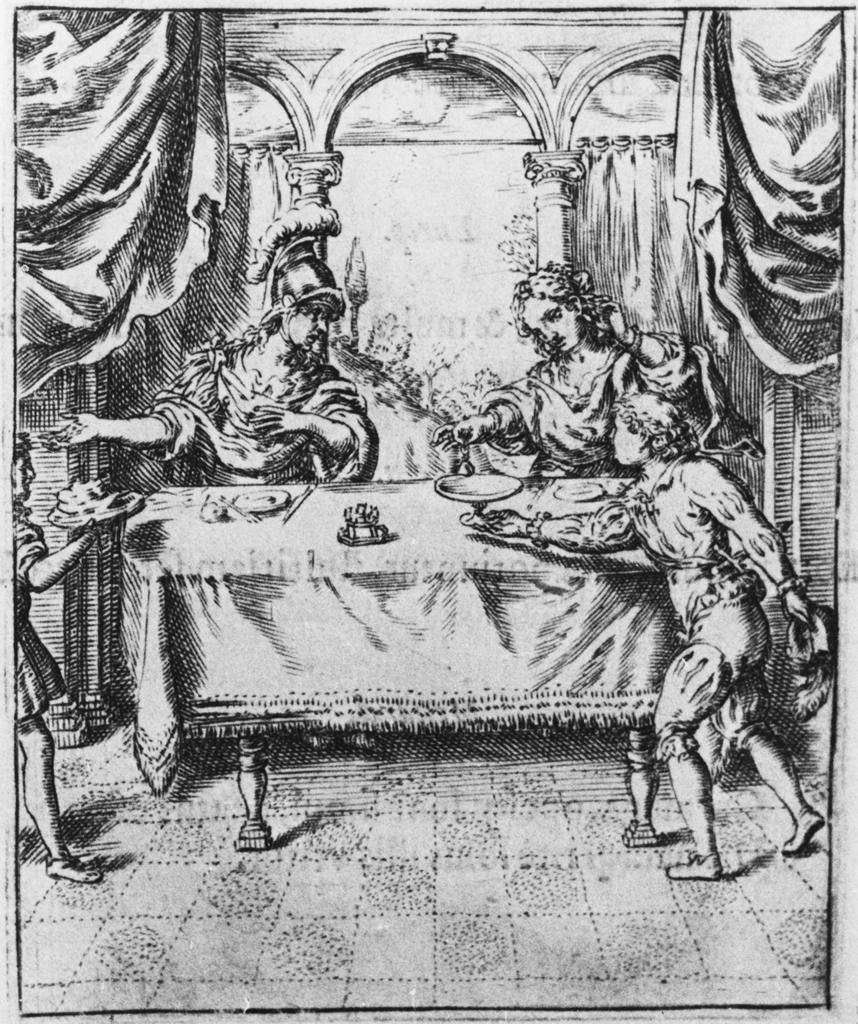It is possible that Mark Antony met the young Cleopatra when he served under the Roman general Gabinius in 55 BCE, but it is their formal meeting, following the death of Julius Caesar and the events thereafter that is well known, inspiring paintings, poetry, plays, engravings, and scores of television series and movies. But the Roman statesman and general, born on 14 January 83 BCE, was much more than the Ptolemaic Egyptian queen’s ill-besotted lover. An officer of Julius Caesar, Mark Antony fought and was finally defeated by Caesar’s heir Octavian — the future emperor Augustus — in the civil war that ended the Roman Republic.
Antony’s friend and mentor Caesar helped Antony win election in 50 as tribune; the rights that this magistrate enjoyed, including the veto, allowed Antony to champion Caesar’s cause as the threat from Pompey the Great and Pompey’s new conservative friends grew. But with his veto ignored and purporting to be endangered, Antony fled with a colleague to Caesar in January 49 BCE. Caesar used their treatment as a pretext to invade Italy and start a civil war. Antony took part in fighting and was left in charge of Italy during Caesar’s campaign in Spain. After holding command of Caesar’s left wing at the battle of Pharsalus, Antony resumed his control of Italy in late 48 BCE.
After Caesar’s assassination in March 44 BCE, Antony seized control of the late dictator’s personal funds and papers and organized a funeral that incited Caesar’s veterans and the people of Rome. The assassins, though officially pardoned, were forced to flee Rome, while Antony gained part of Caesar’s army and a five-year command over the Gallic provinces. A rival finally emerged only in Octavian, who rallied the support of Caesar’s friends, officers, and veterans.
While Octavian returned to Italy to settle veterans, Antony went east to raise funds and make arrangements with local authorities. After a meeting with Cleopatra in 41 BCE, Antony wintered with her in Alexandria, and the Egyptian queen subsequently gave birth to twin children.
Following periods of negotiations and battles with Octavian, Antony was defeated conclusively in the naval Battle of Actium. Though Antony and Cleopatra escaped by sea from Actium in western Greece, they lost most of their forces. Antony’s remaining supporters, including Herod, defected, and Antony committed suicide when Octavian entered Alexandria in August 30 BCE.
Antony benefits from a nuanced biography by Plutarch, who recognized Antony’s military achievements. But the fine portrait of the simpleminded soldier, tragically brought down by love, belongs to literature, not history. The real Antony’s miscalculations lay elsewhere. Ruthless himself, Antony failed to recognize soon enough the even greater ruthlessness of Octavian.
Reference: “Antony, Mark.” In The Oxford Companion to Classical Literature, edited by Howatson, M. C.: Oxford University Press, 2011. http://www.oxfordreference.com/view/10.1093/acref/9780199548545.001.0001/acref-9780199548545-e-0250.
Cameo of Mark Antony, c. 30 BCE. Turquoise. The John and Mable Ringling Museum of art, the State Art Museum of Florida, a division of Florida State University, Nr. SN1435.27
Giovanni Battista Tiepolo, Meeting of Mark Antony and Cleopatra, c. 1750. The National Gallery, London.
Denarius of Cleopatra VII and Mark Antony, 32 BCE. Issued in the eastern Roman Empire. The British Museum, London, United Kingdom.
Boucicaut Workshop; Boccaccio, Des Cas Des Mobles Hommes et Femmes: fol. 15v: Tomb of Mark Antony and Cleopatra, c.1411. University of California, San Diego.
Oliviero Gatti, Cleopatra and Marc Antony at Table, Emblemata of Paolo Maccio, 1628. The Illustrated Bartsch. Vol. 41, Italian Masters of the Seventeenth Century.
Further Reading: Josiah Osgood. Caesar’s Legacy: Civil War and the Emergence of the Roman Empire. Cambridge, U.K.: Cambridge University Press, 2006.
Plutarch. Life of Antony. Edited by C. B. R. Pelling. Cambridge, U.K.: Cambridge University Press, 1988.




